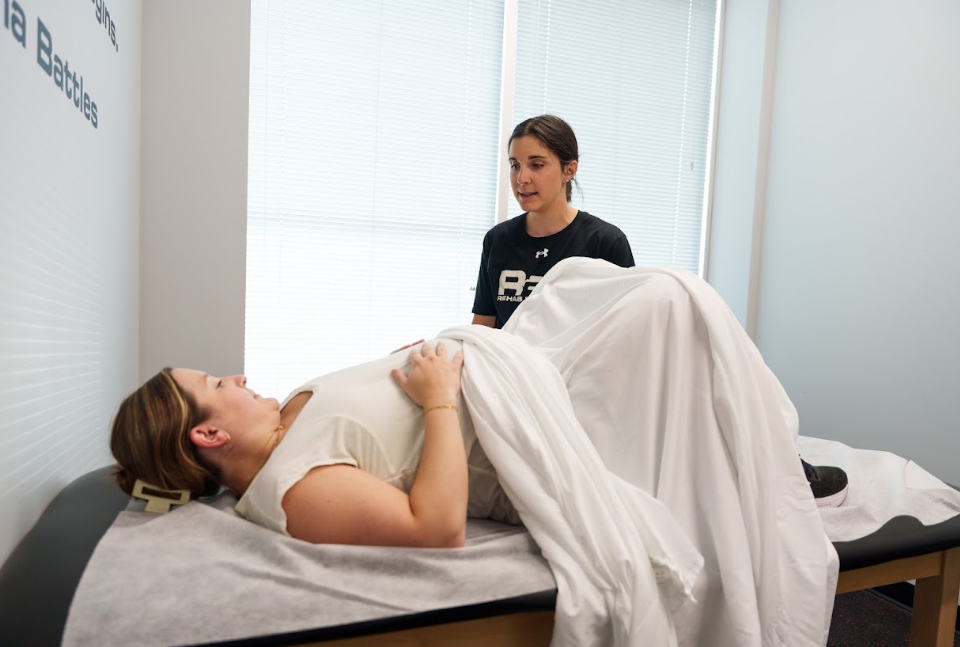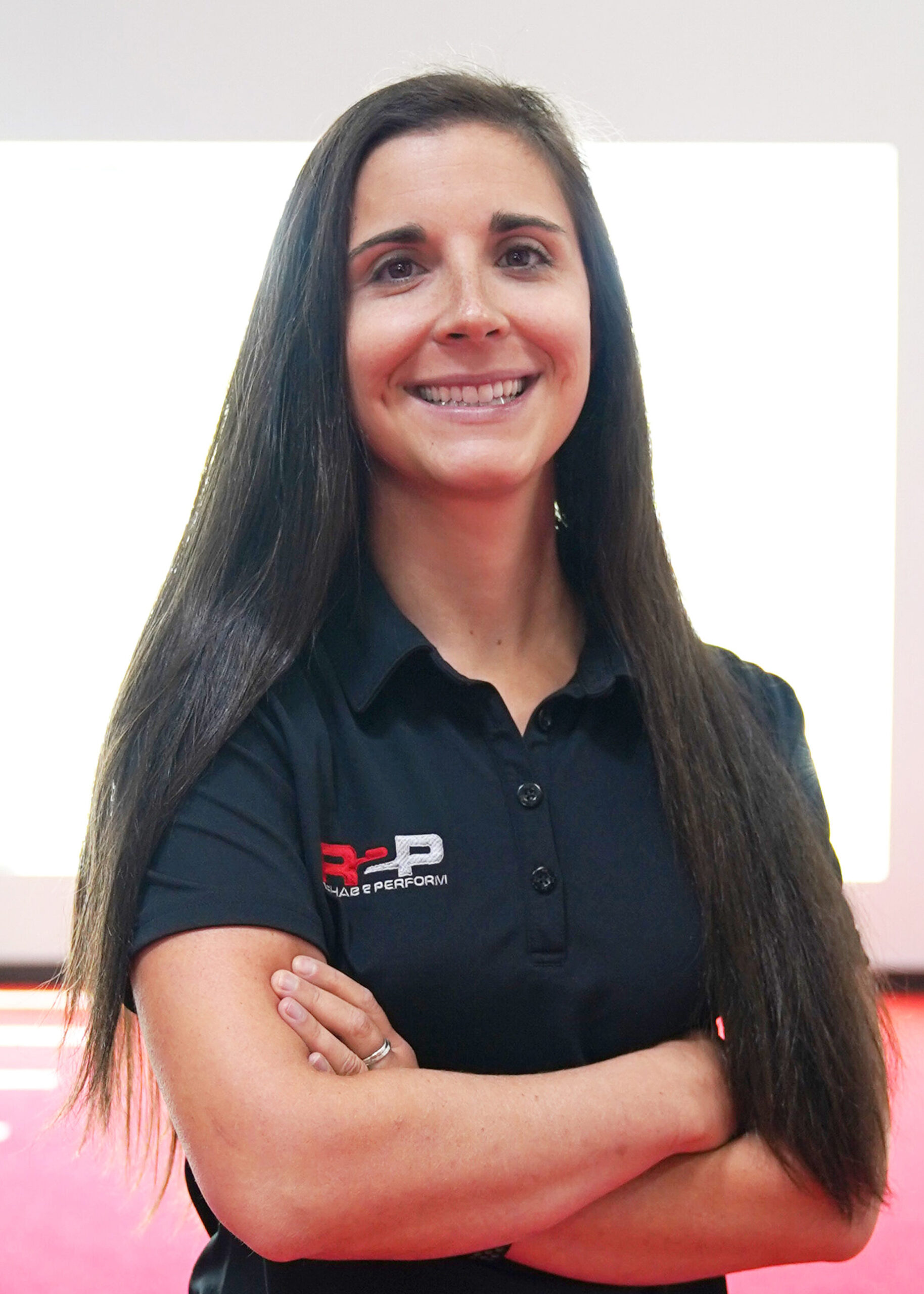Every Mom Deserves a Postpartum Physical Therapy Checkup

Why Every Mom Deserves a Postpartum Physical Therapy Checkup – Just Like a 6-Week OB Visit
If you’ve recently had a baby, you’ve probably made it through your 6-week OB checkup. You got the green light to return to normal life… but what does that really mean?
As a pelvic health physical therapist (and mom of three), I can tell you firsthand: that 6-week visit is a great start, but it’s not the full picture. Healing after childbirth involves so much more than a brief conversation and a quick pelvic exam.
Whether your delivery was vaginal or via C-section, your body has been through a significant transformation. Muscles have stretched. Joints have shifted. Core and pelvic floor coordination has changed. And yet, most new moms are left to figure it all out alone.
At Rehab 2 Perform, we believe every mom deserves a postpartum PT checkup, because your recovery matters just as much as your baby’s birth story.
What Your 6-Week OB Visit Does (and Doesn’t) Cover
Your OB-GYN plays a crucial role in making sure you’re medically cleared and healing well from a clinical perspective. At your 6-week visit, they typically assess:
- Uterine healing
- Incision or tear repair
- Breast health and postpartum bleeding
- Contraception or family planning options
- Clearance for sex or exercise
But here’s what’s often not assessed in depth:
- Pelvic floor muscle strength, coordination, or tension
- Diastasis recti or abdominal wall integrity
- Breathing mechanics or pressure management
- Bladder or bowel function
- Musculoskeletal pain (hips, back, tailbone, etc.)
- Readiness to return to movement or lifting
What Happens at a Postpartum Physical Therapy Checkup?
A postpartum PT checkup is all about you– your recovery, your symptoms, and your goals. At Rehab 2 Perform, our checkup can included:
- Full-body movement screen (looking at how you move, lift, squat, and carry)
- Postural and breathing assessment
- Diastasis recti check
- Pelvic floor evaluation (strength, coordination, and tension)
- Core function and pressure management assessment
- Education on what’s normal vs. what needs attention
- Customized plan to help you return to your desired activities safely
Whether you’re 6 weeks or 6 months postpartum, we meet you where you are and build a plan that supports your healing.
Why Postpartum PT Matters for Long-Term Health
Many moms assume issues like leaking, heaviness, back pain, or core weakness are just “part of motherhood.” But they’re not. They’re treatable.
Postpartum PT can help prevent or improve:
- Urinary leakage and urgency
- Pelvic organ prolapse or heaviness
- Persistent core or abdominal weakness
- Hip, back, or tailbone pain
- Pain during sex
- Difficulty returning to exercise or daily activities
When we assess and address these symptoms early, we can prevent them from becoming chronic down the road.
When Should You Schedule a Checkup?
You can schedule a postpartum PT checkup:
- Anytime after your 6-week OB clearance
- Later postpartum (even years later) if you’re still experiencing symptoms
- During future pregnancies to prepare your body for delivery and postpartum recovery
- Even if you feel great, to ensure you’re functioning optimally
If you’re not sure whether a PT checkup is right for you, here’s a simple guide:
If you’ve had a baby, you qualify.
Bonus: Foundational Exercises We Recommend for Early Recovery
Once you’re cleared, these are some of the gentle, low-impact movements we often start with to help rebuild core function:
- Diaphragmatic Breathing: Supports core and pelvic floor coordination
- Glute Bridges: Strengthens hips and posterior chain
- Bear Crawl lifts: Encourages spinal awareness and core strength. *Can make harder with leg/arm movement
- Cat-Cow Stretch: Improves spinal mobility and breath control
Each one is designed to help you reconnect with your body after birth.
Take the Next Step, Because You Deserve It
You’ve cared for your baby, now it’s time to care for yourself.
Postpartum physical therapy isn’t a luxury. It’s a missing link in women’s health that more and more providers and moms are finally recognizing as essential. You don’t need to wait for symptoms to show up. Proactive recovery is powerful.
At Rehab 2 Perform, we’re here to support you every step of the way, from diapers and sleepless nights to your first run or deadlift after baby.
Schedule your postpartum PT checkup today at Rehab 2 Perform and give your body the recovery it deserves.
This blog is for educational purposes only and does not replace medical advice. Please consult your healthcare provider before starting any new recovery program.
- Dr. Jamie Schindler, DPT, SCS, CSCS, Pelvic Health Specialist & Area Director- Annapolis & Gambrills

About Rehab 2 Perform
Rehab 2 Perform is a leading physical therapy and sports rehabilitation company dedicated to helping clients achieve optimal performance in their daily lives, whether they are athletes, weekend warriors, or individuals recovering from injury. With a team of highly skilled professionals across the DMV, Rehab 2 Perform offers a personalized, evidence-based approach that emphasizes active rehabilitation and functional fitness. Find a Location near you, or Schedule Here.
